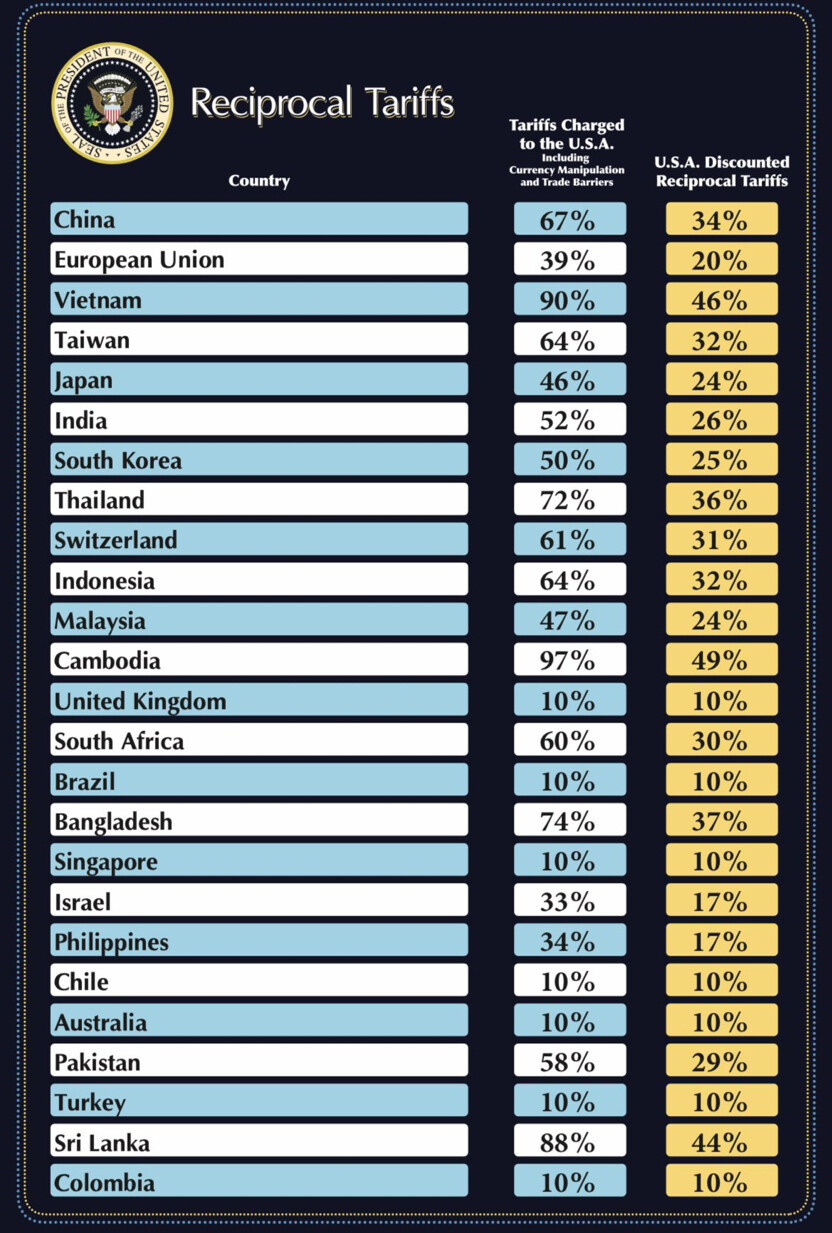In April 2, 2025, President Donald Trump declared “Liberation Day” and announced a comprehensive set of tariffs aimed at reshaping U.S. trade relationships and bolstering domestic industries. The new policy introduces a universal 10% tariff on all imports, with significantly higher rates for specific countries and products.
President Trump framed these measures as a “Declaration of Economic Independence,” asserting that they are necessary to counteract unfair trade practices and to rejuvenate American manufacturing. He emphasized that the tariffs are designed to be reciprocal, mirroring the trade barriers that other nations have imposed on U.S. products (New York Post).

In a recent press release, the Trump Administration justified the need for comprehensive tariffs citing national security and domestic food security needs. The Administration also cited the positive impact tariffs have on domestic manufacturing and noted the positive impact of manufacturing jobs on local communities (White House).
The announcement has elicited a spectrum of responses both domestically and internationally:
Notably, Canada and Mexico are exempt from these new tariffs. The 10% baseline tariff is set to take effect on April 5, 2025, with the higher country-specific rates commencing on April 9, 2025.
According to the Wall Street Journal, Treasury Secretary Scott Bessent has indicated to lawmakers that these tariffs are intended as a ceiling rather than a floor, suggesting they are not expected to increase further and may be subject to negotiation. However, President Trump has hinted at the possibility of escalating tariffs if other nations retaliate (WSJ).
As the global community braces for the impact of these sweeping tariffs, the full ramifications for international trade and the U.S. economy remain uncertain.
Editors Note: This article was partially created using Artificial Intelligence.

James Hendrickson is an internet entrepreneur, blogging junky, hunter and personal finance geek. When he’s not lurking in coffee shops in Portland, Oregon, you’ll find him in the Pacific Northwest’s great outdoors. James has a masters degree in Sociology from the University of Maryland at College Park and a Bachelors degree on Sociology from Earlham College. He loves individual stocks, bonds and precious metals.
Copyright © 2019-2024 SecurenetWatch All rights reserved. About Us | Contact Us | Disclaimer | Terms Of Use | Privacy Policy